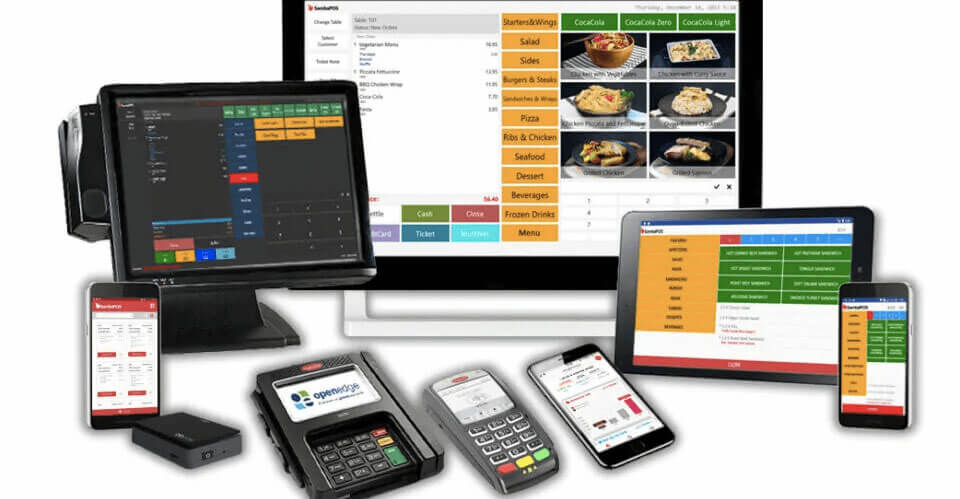Exactly How POS System Works: A Comprehensive Overview for Service Owners

Comprehending the Elements of a POS System

How Sales Purchases Are Refined
When a customer decides to make a purchase, the sales transaction launches a collection of systematic steps within the POS system. Initially, the cashier inputs the things being bought, which are checked through a barcode reader or manually entered. This action gets product details, including rates and appropriate taxes, from the system's database.Next, the consumer exists with the complete amount due. The POS system then refines the repayment, whether via cash money, charge card, or mobile settlement methods (Restaurant POS Software). For digital payments, the POS securely connects with settlement processors to authorize and verify the transaction.Once the settlement is confirmed, the system produces a receipt, which can be printed or sent electronically. This receipt acts as receipt for the customer. The transaction information is videotaped in the system, ensuring exact sales documents and economic monitoring for the business.
Inventory Monitoring and Monitoring

Effective stock monitoring and tracking are necessary parts of a POS system, as they ensure that organizations keep optimal stock degrees and decrease disparities. A robust POS system enables real-time inventory updates, showing sales and returns immediately. This makes it possible for company owner to keep track of stock levels precisely, guaranteeing that popular items are readily offered while preventing overstocking of less popular products.Additionally, progressed POS systems use attributes such as automatic supply notifies and reorder ideas, improving the procurement procedure. Barcoding and RFID modern technology enhance precision in tracking supply movement, reducing human error. Comprehensive reporting tools provide insights into inventory turnover rates, aiding organizations make informed decisions concerning purchasing and product offerings. Ultimately, effective inventory management through a POS system not just boosts functional efficiency yet also improves consumer complete satisfaction by making sure item availability.
Evaluating Consumer Information and Insights
Client information analysis acts as an effective tool for companies making use of a POS system (Restaurant POS Software). By taking a look at and accumulating transaction data, companies can reveal useful here insights regarding client behavior and choices. This evaluation enables them to identify acquiring fads, peak buying times, and preferred products, therefore informing stock decisions and marketing strategies.Additionally, companies can segment their client base, permitting individualized marketing initiatives here that satisfy details demographics or purchasing behaviors. Understanding consumer loyalty patterns also assists in establishing targeted promos and incentives programs.The information gleaned from a POS system can additionally disclose understandings right into client comments, enabling businesses to make informed choices concerning item offerings and solution enhancements. Inevitably, leveraging customer information successfully can boost the general shopping experience, foster client complete satisfaction, and drive income development
Advantages of Implementing a POS System

Frequently Asked Concerns
What Sorts Of Services Can Profit From a POS System?
Numerous businesses benefit from a POS system, consisting of retail shops, dining establishments, salons, and e-commerce systems. These systems improve purchases, inventory monitoring, and customer information, improving operational effectiveness and improving customer experience throughout varied sectors.
Exactly how Much Does a POS System Normally Expense?
The cost of a POS system commonly varies from a few hundred to several thousand bucks, depending upon attributes, equipment, and software program. Services should consider ongoing charges for upkeep, support, and transaction handling when budgeting.
Can I Incorporate a POS System With Existing Software Application?
Integrating a POS system with existing software application is commonly possible. Several systems supply APIs or integrated compatibility functions, permitting services to enhance procedures and enhance capability by connecting numerous software applications effectively.
What Training Is Needed for Staff to Use a POS System?
Training for team to use a POS system commonly consists of understanding software performances, processing deals, managing stock, and dealing with client communications. Practical demos and hands-on practice improve effectiveness and self-confidence in operation the system efficiently.
What Takes place if the Web Drops While Making Use Of a POS System?
If the web decreases during POS system usage, purchases may be interrupted. Lots of systems provide offline capacities, allowing fundamental operations to proceed, however full capability, consisting of real-time inventory updates, will be limited. A Point of Sale (POS) system is made up of several crucial components that work together to assist in purchases and manage company operations. Efficient stock management and monitoring are vital components of a POS system, as they ensure that businesses keep ideal stock degrees and decrease discrepancies. Consumer information analysis offers as a powerful tool for businesses using a POS system. Recognizing client commitment patterns likewise assists in creating targeted promos and rewards programs.The data amassed from a POS system can also expose insights right into consumer feedback, allowing companies to make educated decisions concerning item offerings and solution improvements. Implementing a POS system supplies numerous benefits that can substantially enhance service procedures.